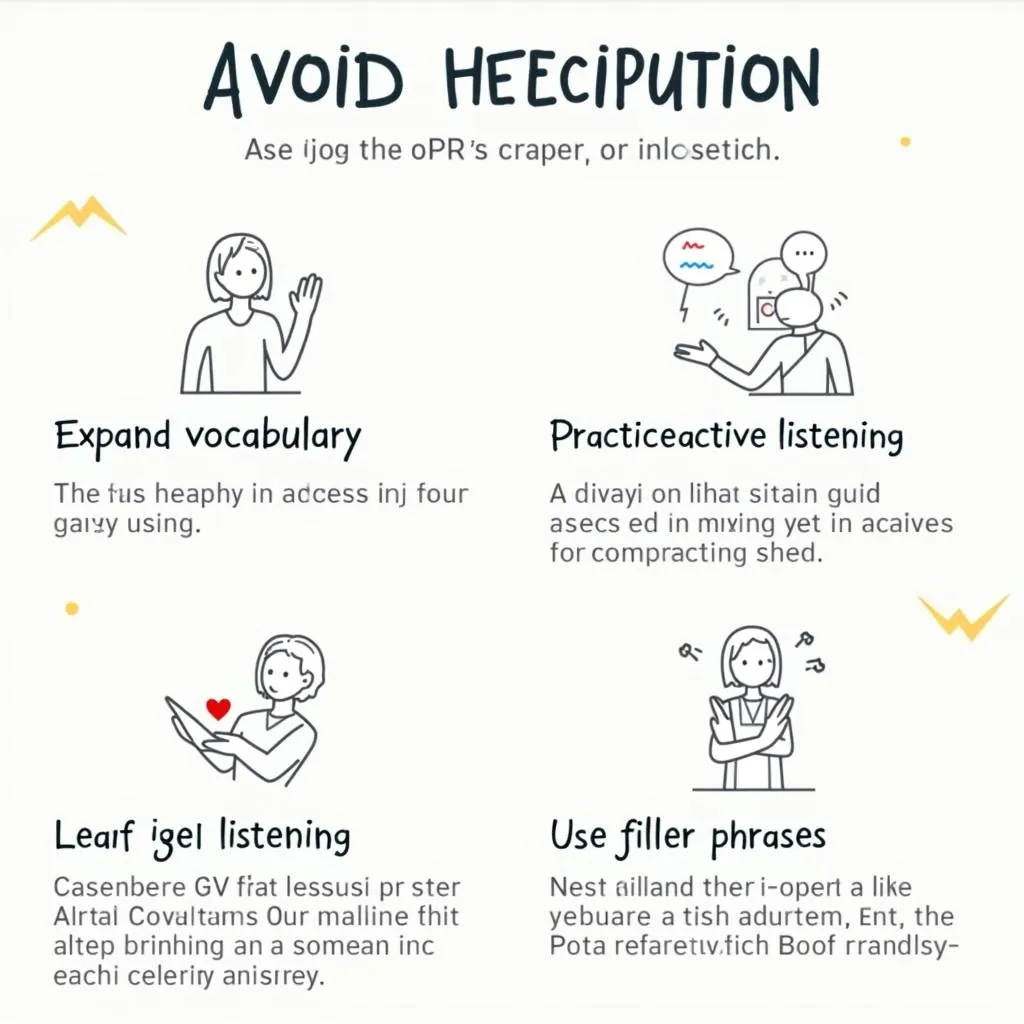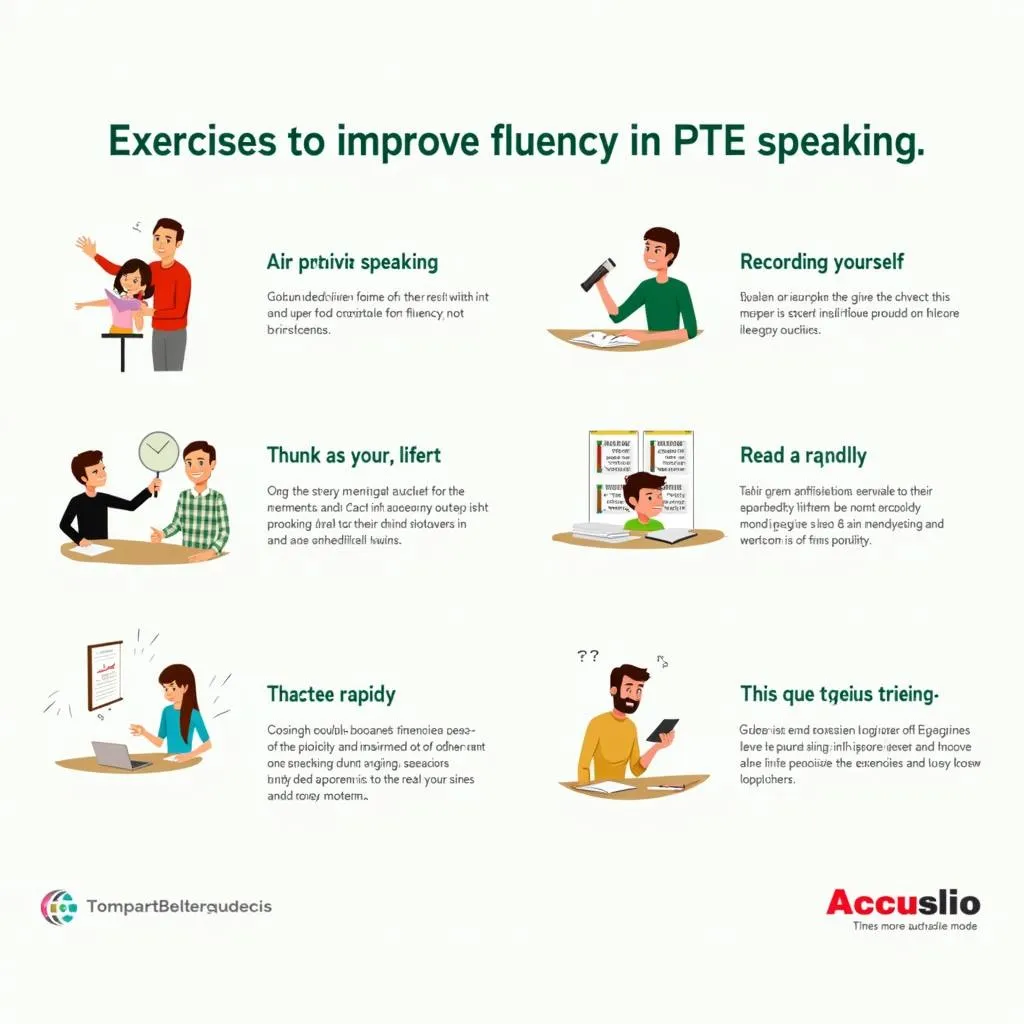Speaking confidently in English can be challenging, especially during a high-stakes test like the PTE Academic. Hesitation can significantly impact your score, but with the right strategies, you can overcome this hurdle and excel in the speaking section. This comprehensive guide will provide you with practical tips on How To Avoid Hesitation In PTE Speaking and improve your overall performance.
Understanding the Root Causes of Hesitation
Before diving into strategies, it’s crucial to identify why hesitation occurs in the first place. Common reasons include:
- Lack of vocabulary
- Fear of making mistakes
- Overthinking responses
- Insufficient practice
- Test anxiety
By recognizing these factors, you can tailor your preparation to address specific weaknesses and build confidence.
Effective Strategies to Minimize Hesitation
1. Expand Your Vocabulary
A robust vocabulary is key to speaking fluently without pauses. To enhance your word bank:
- Read extensively on various topics
- Learn new words in context
- Use vocabulary apps and flashcards
- Practice using new words in sentences
Remember, it’s not just about knowing more words, but also about using them appropriately in context.
2. Practice Active Listening
Improving your listening skills can significantly reduce hesitation in speaking. Try these techniques:
- Listen to English podcasts and news broadcasts
- Watch English movies and TV shows without subtitles
- Engage in conversations with native speakers
- Participate in language exchange programs
How to analyze your performance in PTE speaking can help you identify areas where your listening skills may be impacting your speaking performance.
3. Develop Filler Phrases
While it’s best to avoid excessive use of fillers, having a few go-to phrases can help you bridge gaps in your speech:
- “That’s an interesting question…”
- “Let me think about that for a moment…”
- “To put it another way…”
Use these sparingly and naturally to maintain fluency without sounding repetitive.
 Strategies to avoid hesitation in PTE speaking
Strategies to avoid hesitation in PTE speaking
4. Implement the ‘Think-Aloud’ Technique
This strategy involves verbalizing your thought process as you formulate your response. It can help you:
- Organize your ideas more effectively
- Reduce silent pauses
- Demonstrate your English proficiency even while thinking
Practice this technique regularly to make it feel more natural during the actual test.
5. Master Time Management
Many test-takers hesitate due to poor time management. To improve:
- Use a timer during practice sessions
- Learn to pace yourself for different question types
- Develop a sense of how long 30 seconds or 40 seconds feel
How to practice PTE speaking under pressure offers valuable insights into managing time constraints effectively.
6. Utilize Visualization Techniques
Visualization can help reduce anxiety and improve fluency:
- Imagine yourself speaking confidently
- Visualize successful completion of tasks
- Practice deep breathing exercises before speaking
These mental preparation techniques can significantly boost your performance.
Practical Exercises to Reduce Hesitation
Incorporate these exercises into your daily routine to build fluency:
- Shadow speaking: Repeat after native speakers in real-time
- Topic-based monologues: Speak for 1 minute on random topics
- Record and review: Analyze your speech patterns and areas for improvement
- Speed reading: Improve your ability to process information quickly
- Tongue twisters: Enhance pronunciation and reduce verbal stumbling
 Practical exercises to improve fluency in PTE speaking
Practical exercises to improve fluency in PTE speaking
Common Pitfalls to Avoid
While working on reducing hesitation, be mindful of these common mistakes:
- Overusing filler words
- Speaking too quickly in an attempt to avoid pauses
- Memorizing scripted responses
- Neglecting proper intonation and stress
How to avoid common mistakes in PTE provides a comprehensive overview of pitfalls to watch out for during your PTE preparation.
Expert Advice on Fluency in PTE Speaking
Dr. Emma Thompson, a renowned PTE coach with over 15 years of experience, shares her insights:
“The key to fluency in PTE speaking is not just about avoiding pauses, but about maintaining a natural flow of speech. Focus on expressing your ideas clearly and confidently, rather than trying to achieve perfection in every sentence.”
This advice underscores the importance of balancing fluency with effective communication.
Building Long-term Fluency for PTE Success
Remember, avoiding hesitation is part of a larger goal to build fluency for PTE speaking section. Long-term strategies include:
- Immersing yourself in English-language media
- Joining English conversation groups or clubs
- Setting daily speaking practice goals
- Seeking feedback from native speakers or tutors
Consistency in these practices will lead to lasting improvements in your speaking skills.
Conclusion: Embracing Confidence in PTE Speaking
Mastering how to avoid hesitation in PTE speaking is a journey that requires dedication and practice. By implementing the strategies and exercises outlined in this guide, you can significantly improve your fluency and confidence. Remember, the goal is not perfection, but effective communication. Embrace the process, stay consistent in your practice, and approach your PTE speaking tasks with a positive mindset. With time and effort, you’ll find yourself speaking more smoothly and confidently, setting yourself up for success in the PTE Academic exam.
FAQ: Mastering PTE Speaking Fluency
-
Q: How long should I practice speaking daily to reduce hesitation?
A: Aim for at least 30 minutes of focused speaking practice daily, gradually increasing as you build stamina and confidence. -
Q: Can reading aloud help improve my speaking fluency for PTE?
A: Yes, reading aloud can significantly improve your fluency by enhancing your pronunciation, intonation, and overall comfort with speaking English. -
Q: Is it okay to use fillers like “um” and “ah” during the PTE speaking test?
A: While it’s natural to use some fillers, excessive use can impact your fluency score. Try to minimize them and use more sophisticated bridging phrases instead. -
Q: How can I overcome my fear of making mistakes during the speaking section?
A: Practice speaking without self-censoring, focus on communicating your ideas clearly, and remember that minor mistakes are less important than overall fluency and coherence. -
Q: Are there any breathing techniques that can help reduce hesitation in speaking?
A: Yes, deep breathing exercises before and during the test can help calm nerves and reduce hesitation. Practice diaphragmatic breathing to maintain composure.